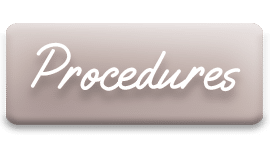Laser Skin Resurfacing
Performed by Dr. Elliott in Atlanta GA
Laser skin resurfacing is a procedure that can address a wide number of facial cosmetic concerns. This treatment has the ability to improve overall skin tone and complexion, as well as remove blemishes like fine lines, wrinkles, superficial scars, age spots, birthmarks, and freckles. In addition to minimizing the appearance of blemishes, laser skin resurfacing is a wonderful complement to other facial procedures, like a facelift, because it enhances surgical results while minimizing the appearance of scarring.
Laser skin resurfacing is especially effective because it treats both the epidermis (outer layer of skin) and the dermis (deeper layers of the skin). Because the blemishes are primarily affecting the epidermis, the procedure removes the damaged outer layer of skin. At the same time, the dermis is heated in order to stimulate growth of new collagen. As the compound that supports the firmness and elasticity of the skin, collagen growth helps the fresh new skin to be firmer, smoother, and more youthful. As a minimally-invasive procedure, laser skin resurfacing is an in-office, out-patient treatment that provides outstanding results despite the brevity and simplicity of the procedure.
Frequently Asked Questions
What can I expect during my recovery from laser skin resurfacing?
For the first few days after the procedure, your skin will have a sensation and appearance similar to that of a mild sunburn. After several days, the treated skin will become dry and begin peeling to reveal the fresh, more youthful skin underneath. Generally, full recovery takes at least a week. Every patient’s recovery varies based on the extensiveness of the procedure, the patient’s skin type, and other factors, all of which will be discussed with board-certified plastic surgeon Dr. Franklyn Elliott in your consultation.
What can I do after my procedure to maximize my results?
The most valuable thing you can do to ensure the best possible laser skin resurfacing results is to avoid sun exposure. Planning as little outdoor time as possible during your recovery period is ideal, but when you do need to go outside (even for short periods of time), wear broad-spectrum SPF 30 or higher sunscreen, as well as a wide-brimmed hat. Even indirect sunlight can cause unwanted pigmentation, so use extra care during the critical days after your procedure. You can also help your recovery go more smoothly by closely following all post-procedure instructions, elevating your head with an extra pillow at night, and using a cool compress to ease the potential swelling and discomfort during the first day or two after your treatment.
Am I a good candidate for laser skin resurfacing?
Patients in overall good health and those who are unhappy with signs of aging and superficial facial blemishes may be good candidates for laser skin resurfacing. However, this procedure is typically not as successful for patients with active acne, deep wrinkles, very dark skin, or extremely saggy excess skin.
When is the best time to have laser skin resurfacing?
While patients can have exceptional results at any time of the year, it is generally easier to have a smoother recovery if the procedure is performed during the winter. Avoiding sun exposure is key for a successful recovery and ideal results, and this tends to be easier during the winter because the sun is not as strong as it is during the summer months.





